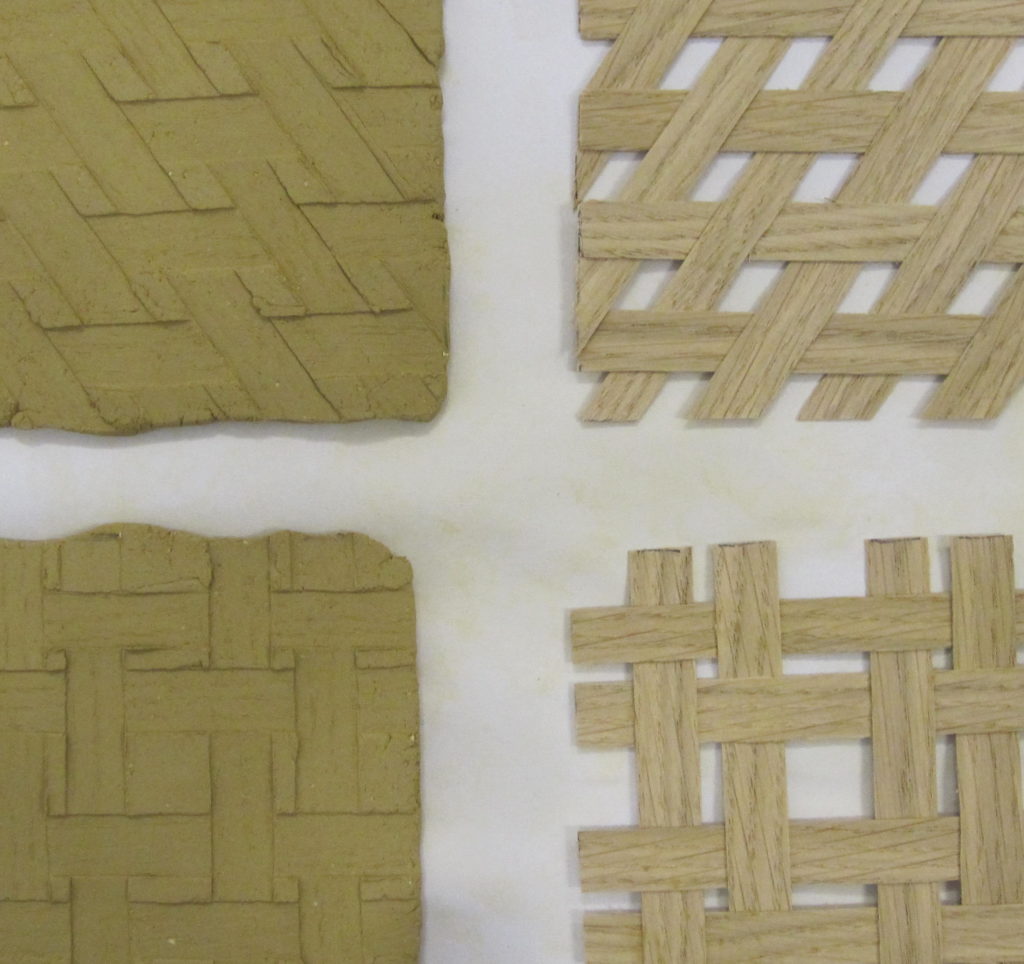It can be found where construction has to be cheap and simple.
Corrugated sheet metal.
Inspired by the Slums we developed a fascination for the material and its shape.


Attention!
is a porcelain tea and coffee set that is supposed to call attention on the matter of thoughtless design and consumerism.
When I started to work on the design of an object for the exhibition and the auction I was certain I wanted to make a tea set. But working with the kids in Nairobi’s slum got me thinking what purpose is there in another object such as a tea set. I was confronted with the way that we consume today in our world. Recourses are spent, people get exploited and one object after another gets replaced with an object matching the newest trend. Of cause I saw that the product designer is part of the problem.
So I tried to design a container for liquids that could express my concerns and still could be used as a tea or coffee set.
During this project I gained a lot of social design experience and it came conscious to me that the contemporary designer should question his design and its effects on society.

For me, one of the most striking aspects of our exchange was the perseverance and adaptability shown by the people living in Kangemi and Kawangware. They face poor living conditions and frequent displacement. However, what seem like harsh limitations also bear a huge potential for innovation. It was immensely impressive to see the Love School kids and local craftsmen working wonders with what they had. After gaining insight into their lives, I found it essential to reflect on the way we value our resources and to integrate this in my project. We are constantly producing new designs, while perfectly good objects and quality parts are discarded. How can people be made more aware of the possibilities that these items still hold?
In this context, furniture is a relevant topic. While very little changes in its functionality, there is a seemingly endless stream of chairs and desks being churned out each year. Considering that our natural resources are ultimately restricted, this practise seems questionable. It raised the idea of learning from the inhabitants of the slums and working with materials, objects, parts that were already existing and freely available.
These initial thoughts sparked an in-depth exploration of transitional structures, built using only found material. I sourced the scrap bins at university for remnants of old mock-ups and the streets of Neukölln for unwanted furniture. Furthermore, I tried to restrict myself to minimal tools during the experimentation process. The idea was to develop an accessible design along the lines of Do-It-Yourself movements like Jugaad and Gambiarra.
The result is Benchmark, a chair (prototype) inspired by the furniture in Nairobi slum schools. Commonly, their school benches consist of wooden slats, joined using nails. Technically, these desks can be produced using the most basic of hand tools, without the need of electric machines or fancy equipment. This makes them a perfect example for democratic design.
In the case Benchmark, colourful acrylic dowels take the place of the nails. Their bright orange faces highlight the simple, almost primitive construction. It turns the rough, naïve aesthetic of DIY culture into a coveted design feature. Every piece is unique, as it is made entirely from reclaimed wood and furniture parts. Besides raising money for the Love School, it hopes to inspire people to give broken, worn-out or undesired furniture a second chance.
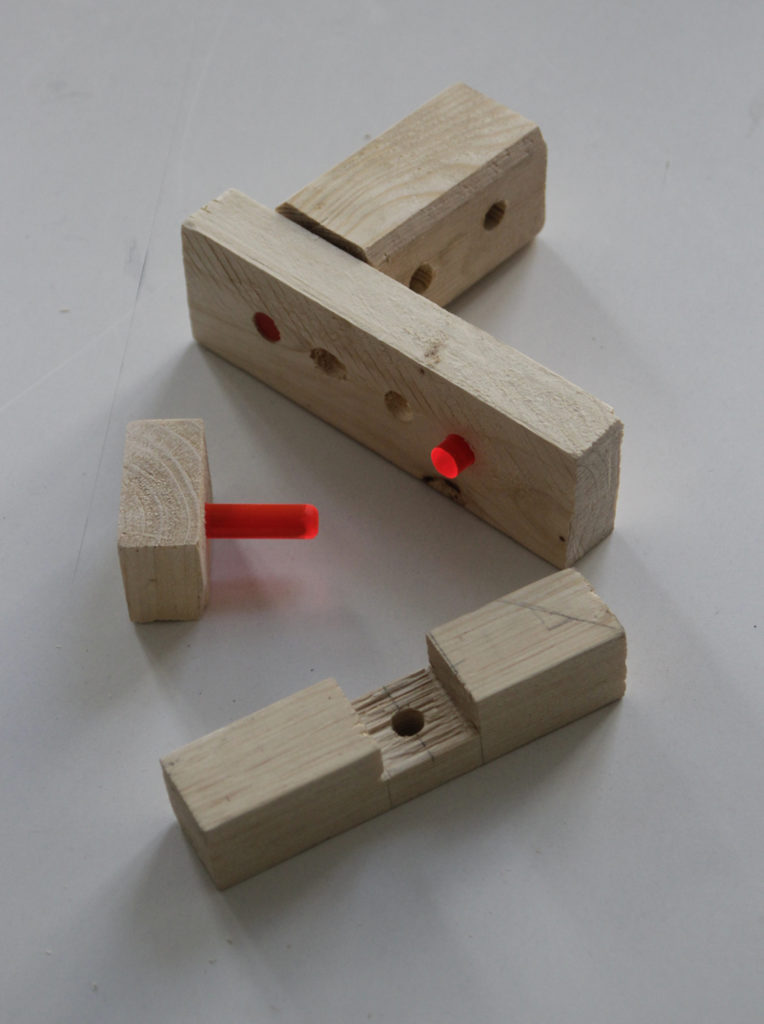
The inspiration for the chair were the school benches at the Love School. They are very simple constructs made of wooden planks and nails. After studying the way they were constructed, I based my design on it.
I collected alot of discarded wood around the university and the streets. I wanted the product to consist of recycled material.
Instead of nails, I used bright orange acrylic dowels to highlight the joining method.

SINUS is not just a table!
It is a set of pieces that can be used playfully to organize and structure a space.
The complementary parts give possibilities and restrictions in order to explore new ways of usage. Looking at tables from a different perspective, breaking the rules to make space for new ideas.
We love things that fit together. Ever since we put, set, turn, combine, place and sort the things that surround us. SINUS is dedicated to that pleasure.
Two tables, one made of wood and the other made from metal have sinus shaped table tops. They are displayed with complementary forms that fit into each other. Here wood meets metal meets porcelain meets foam meets plastic.
The player of the puzzle is invited to assemble the pieces to his needs and taste.
www.annadrewes.com/sinus

We may not realize what an important, and layered role ropes are playing in our everyday lives, we may not think about it anymore how they were used to make the lives of builders, sailors, and shopkeepers easier in the past. The techniques, materials and procedures may have changed throughout the centuries but the function of ropes is as important today as ever. Ropery is a project to explore that.
When I learned that the Love School Project was based in one of the biggest slums of Nairobi, Kenya, I knew: I would like to focus my project on up-cycling, repurposing the trash, surrounding the community and the school, into something useful again.
I first started by researching traditional African handcrafts and very soon found the basket weaving techniques that really impressed me and I wanted to go on along these lines. I had to find a material to make ropes out of and since I knew, there were plenty of old plastic bags laying around everywhere, I started experimenting with the trash bags, I found at home. Shortly after that I had the idea to build the rope making machine, that made my work to twist ropes out of the plastic stripes, possible.
Once I had the ropes I felt a little lost, not knowing how to go on exactly. I definitely wanted to create something simple that could be used in the everyday lives of people, anywhere in the world. After weeks of experimenting I’ve come to the conclusion that I have to return the plastic bags into carrying/holding objects: baskets. However when I started studying the traditional African basket shapes and techniques, I found that the ropes are getting lost in the process, and are no longer in the centre of focus when one looks at the ready products.
As a sailor, I learned all about the knots and loops as a child, and I eventually realized that I have to return to these very basic, original ways of weaving and knotting ropes into baskets. I started with bigger shopping-type of baskets to practice and see the techniques, shapes and styles I wanted to use for the final models. These then rather turned into smaller storage baskets, that are not only stylish but also strong and waterproof, therefore they can be used in anywhere from kitchen, through hallway to bathroom, as equipment holders, or as decoration pieces.
After a long experimental process, I believe I have found a way to incorporate design and up-cycling in these ropes, and I am looking forward to creating more and different products with them. Therefore I consider the ropes as individual products, the Ropery and the baskets as one of its branches.
During my work, I have become more aware of the waste-culture in the Western-world and the project became a critical matter to me, through which I would like to make myself, and others more conscious shoppers… and wasters.

KUTATA is a collection of four tiles which have a structured surface. Each tile has two sides, one carrying the positive and the other the negative of a woven pattern. One side is glazed and thus smooth, the other rough. The patterns of the four tiles are built on a grid, so that you can combine all tiles, it doesn’t matter which pattern and which side you choose or if you turn the tiles. This creates an enormous range of possibilities and ways to arrange your personal wall.
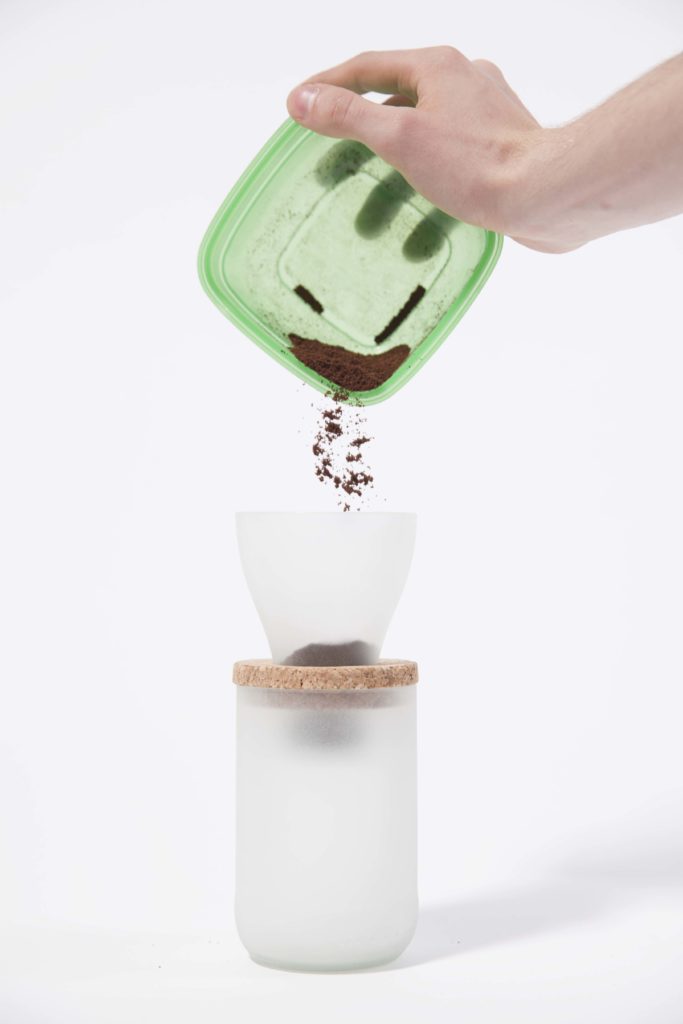
Through getting in touch with life in Kangemi and additional research, ecologic, economic and social interconnectedness and responsibility became more obvious for me. It felt natural to work with free materials and think in objects that could be made by up-cycling existing products.
Further i had the idea to create a design that could be re-created in a do-it-yourself version by the people in Kangemi using also just simple tools and techniques.
Already in an early stage of our team work we were making use of freely available glass objects like screw top jars, glass bottles and light bulbs.
Even though the direction of our work changed throughout the process, i stayed fascinated by the material of glass and how relatively easy already existing shapes could be divided and transformed into something new.
SHIFT is a tea and coffee maker that consists of just five simple parts and is basically made out of a one liter milk bottle. The bottle is cut in two, the upper part turned around to serve as a funnel. The bottle top is made use of as a part of the filter system. It is drilled through and gives hold to the stainless steel wire frame piece that filters tea and coffee. The outsides of the glass are sandblasted to get a milky semitransparent surface and create more grip for the hand.
My first attempts of making a coffee maker from a wine bottle included having to use a conventional paper coffee filter each time. This part i replaced through a filter system that does not constantly produce additional waste. The integration into the bottle top also opened up the possibility of making tea.
Either one can put the upper bottle part reversed into the lower part, add tea and hot water and let the tea steep in there. Or one can use the connection ring made from cork to create distance and let the freshly brewed coffee drip through the filter into the bottles bottom that serves as a drinking glass. SHIFT is also perfect for making cold drip coffee.
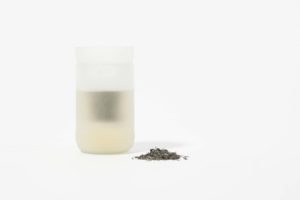 My process of developing SHIFT included getting familiar with different ways of cutting glas bottles. Through many tries and errors i learned about the peculiarities of this material being in particular shapes. I tried to develop the most effective combination of techniques and execution, staying in a frame of simplicity, to get the best results in the processing and shared my learnings in the form of a manual with the Love School kids.
My process of developing SHIFT included getting familiar with different ways of cutting glas bottles. Through many tries and errors i learned about the peculiarities of this material being in particular shapes. I tried to develop the most effective combination of techniques and execution, staying in a frame of simplicity, to get the best results in the processing and shared my learnings in the form of a manual with the Love School kids.
In the DIY version the bottle gets scored in the right place with a simple glass cutter and a self build device to hold the bottle and the cutter in place. Then thebottle gets split using thermal stress on the score that causes the glass
to crack. The edges get sanded with sand paper. Instead of cork a ring made out
of ropes from the Ropery project of Louis Bindernagel suits as a connector. A
piece of cotton cloth works very well as a filter instead of a wire frame.
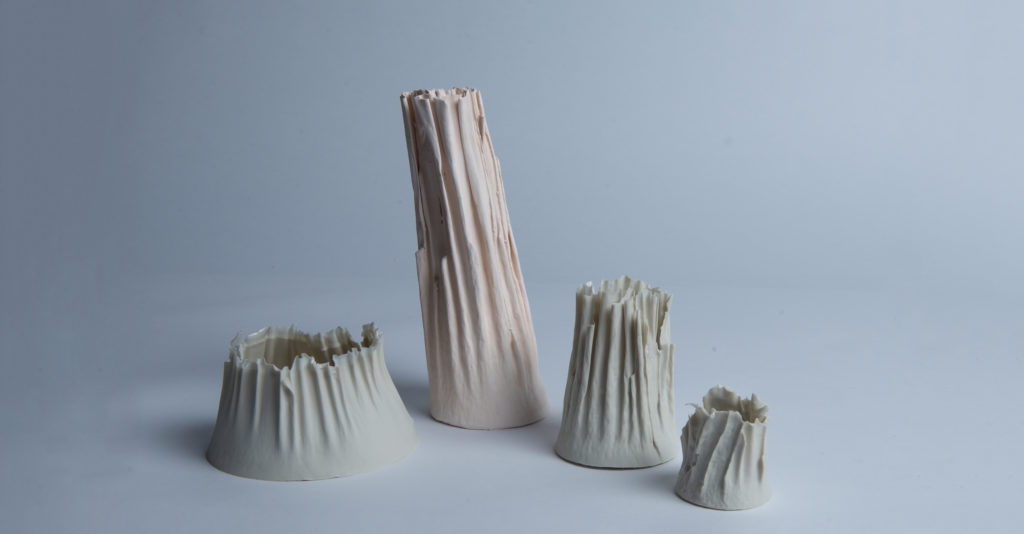

SPHERICITY
As a goldsmith, in my first research on Kenya I was particularly interested in the colorful pearl jewellery of the Massai and the unusual body decorations.
I took my first inspiration from the traditional crafts of pearl weaving and made my first attempts with clay balls woven with wire. I produced larger balls of clay and experimented with arrangements and sizes of beads in the wire braid. The stability of the bead braids was still expandable, but the new dimension of the pearls and the proportions aroused my interest and I finally focused on the ball itself and its connection.
New models with wire-woven paper balls emerged: different combinations of woven ball surfaces to three-dimensional objects.
After porcelain experiments, in which the balls were dipped and paper balls were coated with porcelain and burnt out, difficulties were found to connect several porcelain balls and arrange them in height. I came back to the simple porcelain ball. The balls themselves offered the real flexibility that I wanted and the round shape indicated to nestle and complement each other.
I set the focus on the aspects of flexibility and adaptability and came to my final design.
The porcelain balls are hollow cast. Holes ensure that rubber bands pass through the porcelain balls and connect them together. The woven beads form a flexible surface, which can be changed and shaped by solid wooden ball parts. So the arrangement and form is self-determinable. Not the vessel or the bowl stand in the foreground, but the action of self-design and use according to its own requirements. Flexible elements are given, but the object that is created is self-determined.


Trace is a collection of cups and bowls that show an individual pattern, a trace.
The relief on the outer shell shows grains and seeds, that can be stored inside.
During the burning process the organic material is burnt away, leaving its negative shape, slightly abstracted.
Declaring porcelain as my working material, I not only wanted to work traditionally but I wanted to manipulate the material. With salt, sand, stones, grains and seeds, that I mixed in the liquid porcelain mass, I managed to change the composition of the material. At their former place the porcelain left a space in their shape. Shapewise I decided for cups and stackable bowls for storing, accompanied by interlayers of cork. Each storing bowl reveals its content through the traces left by the burnt away seed or grain. The coloring of the collections fades from rich yellow to the classical porcelain white.

My project was oriented towards the work with the children. Showing the children the basics of a design process was the main focus in the beginning. While the process was about how to develop a form, I wanted the kids not only to learn about how to work with the material but also to develop a more conscious awareness of the surrounding forms and to think more about which forms and objects interest them and why.For me it was more of an analysis about how I would like to design myself which led to many questions. Is it still possible to create new forms or is it only a repetition of existing forms, changing only the details? Is it necessary to create new forms at all? Isn’t the amount of existing forms already enough? What functions can a form provide? How can existing forms be used in different contexts? Are we aware that there are countless forms? What “beauty” is contained in everyday forms that we do not perceive?
Form and the search for “good form” is a great topic in design that was and will always be discussed. As a designer you can spend an eternity on searching for the “right” form of an object. It is a dif cult and detailed process. I wanted to nd a way to explore the topic of form for myself. Since my goal was to explore the topic in general, it was about nding a way to have this analysis without the intense process of creating a completely new shape.
I used already existing forms and combined them in new ways, ignoring their original function and context to explore what potential a certain form has. This way of creating new forms helped me to more carefully observe the existing forms that surround us everyday. On the other hand, by combining different forms and perceiving the impression of the new object helped me to develop a feeling for form combinations, and dsicover which forms go well together and which don’t. By turning the forms I created upside down, I shifted the visual impression of the same form. Also it changed the possible usage of the form.
Through this, the creation of new forms and exploring the eld of form was more about the process than actually designing a new product. My goal was to visualize this without focusing on designing a certain object or product. The function of my objects is not given by me as the designer but is to be chosen by the users themselves so they can explore the forms and think about which function can be provided by the form.
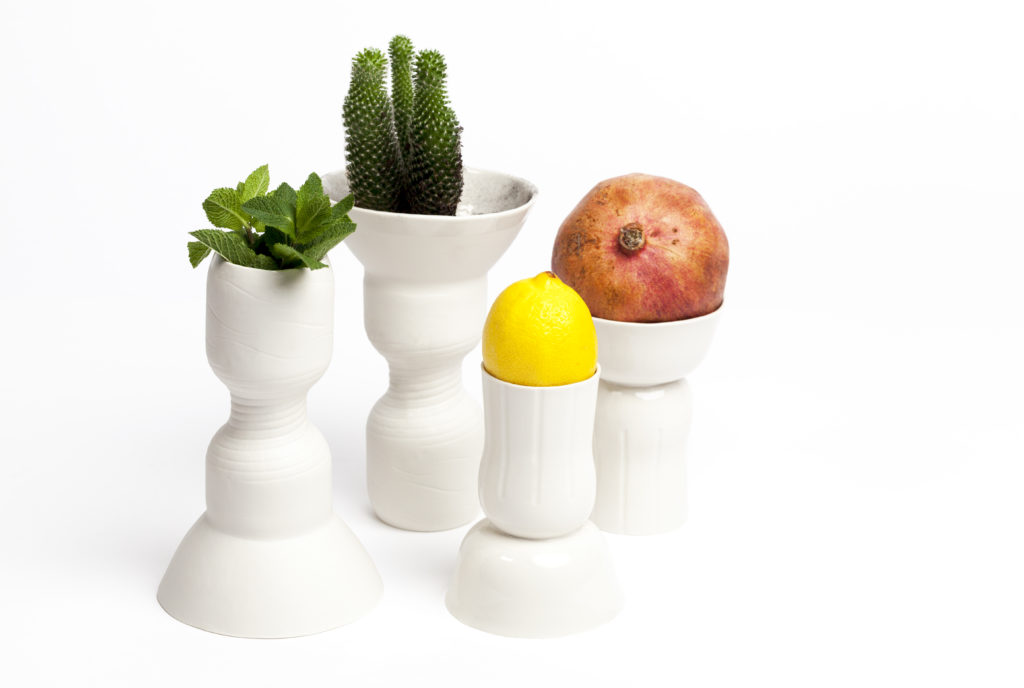
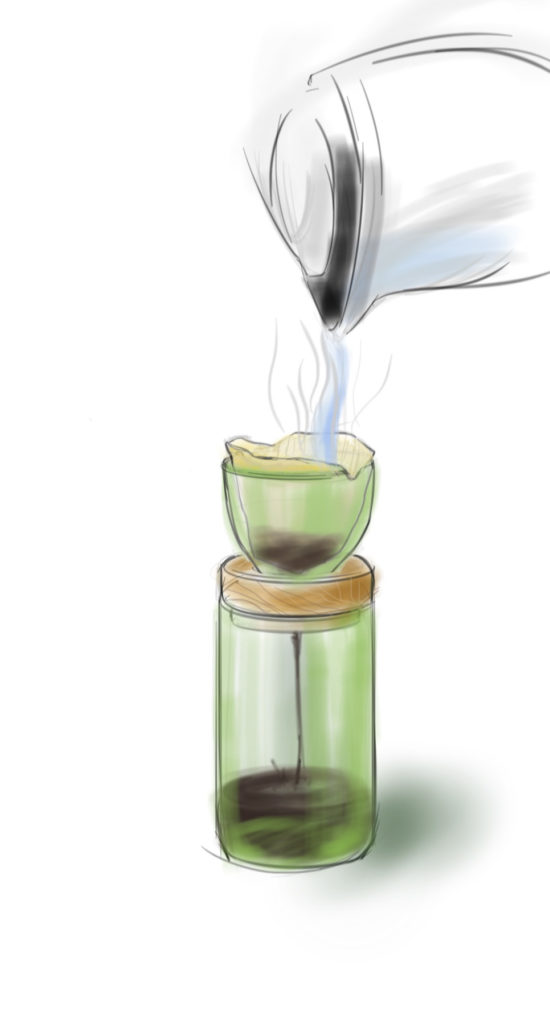


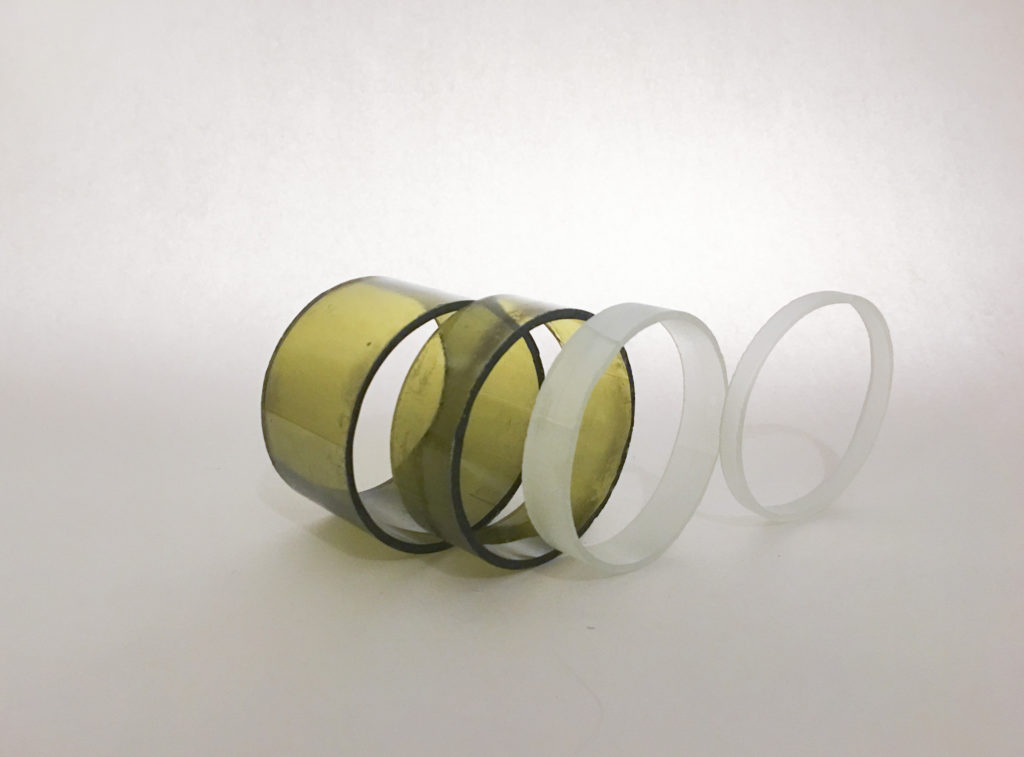
I kept on working with the upcycable material of glas bottles which is available here as well as in Kangemi. Instead of trying to force a solution on how to improve candle light i got familiar with the work with glas in form of bottles. I wanted to encounter this material and pre-product for my purposes and create dishes, lamps or whatever would make sense after i found out which shapes are possible to get out of it.
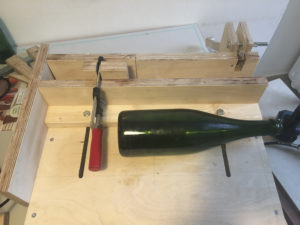
Bottle scoring device – I build this to score the glas and “tell it” where to break when i used thermal stress afterwards, alternating heating up the area around the mark and cooling it down rapidly
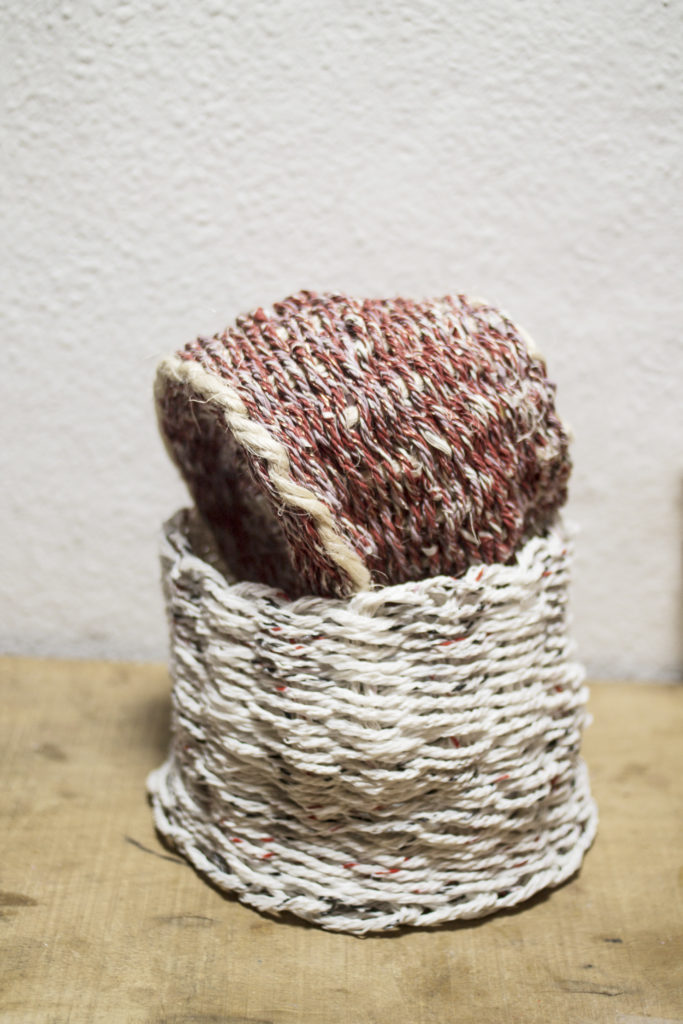

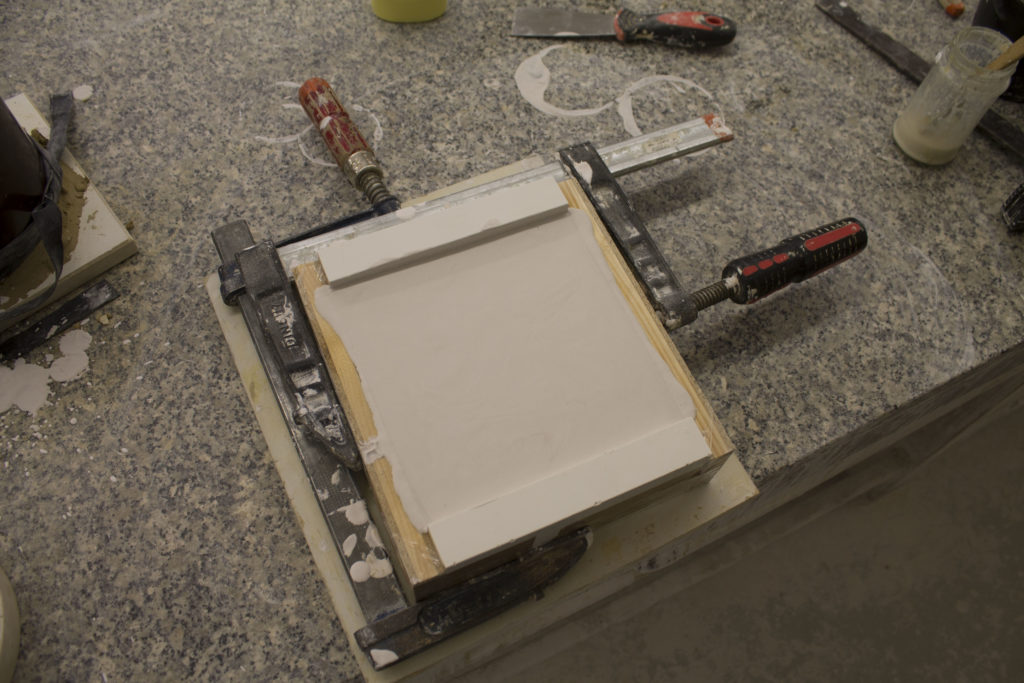
The printed patterns are the template for building the first negative.
Making an imprint with silicone.
starting with the real moulds out of plaster:
The tiles will have two sides which show the positive and the negative of the woven structure.
One side will be glazed, the structure of the other one will help to put the tile on the wall.

I decided that I wanted to make a collection of tiles with imprints of woven structures. The different tiles should fit together in all directions and all patterns. Therefore I created a grid that was based on the first basic structure.
It was not possible to realise all the patterns so I chose a few.

The decisive point during the entire project was the question of how my position as a young designer relates to the actual livelihood and educational issues of children living in a slum. What might be my humble contribution towards resolving any of the connected issues?
For instance, in their kitchens they mainly posess low-value plastic dishes. This fact inspired me to develop vessels made from different materials to achieve diversity and combinability. From experiments with the children of my team a couple of bowls emerged that shared the same attributes: they were made from clay and had woven parts attached to them. This approach remained at the heart of the project. The fusion of clay and woven elements is interesting in itself, especially because the objects lose some of their ceramic immanent functionality and become more decorative, their potential usage decreases with the impossibility of washing them.
Thus my design goal became to create bowls or containers that embrace the decorative element yet do not lose their functionality as ceramic objects. Aesthetically, I chose to separate the materials, or the appearance thereof, and create stackable vessels of either plain or woven structure, which offers a visual and tactile association and differentiation of any single part of the set. The formal aesthetic and symbolism of the woven structure quotes the common purpose of woven baskets and bowls of serving as objects of storage. To guarantee the full functionality of ceramic vessels the woven structure is transferred as an imprint into porcelain, thus only referring to its original purpose as a surface texture.
One container set consists of three porcelain bowls with lids. The bowls can be stacked in any order, used separately or as a tower, while each bowl also functions as lid. Two bowls are of the same height but have different textures – smooth or woven structure. One bowl is smooth and higher. The containers will be available in different colors. Functionally the containers can be used both at room temperature or to store something in the fridge. They can also be used to serve food on the table since the porcelain retains warmth.

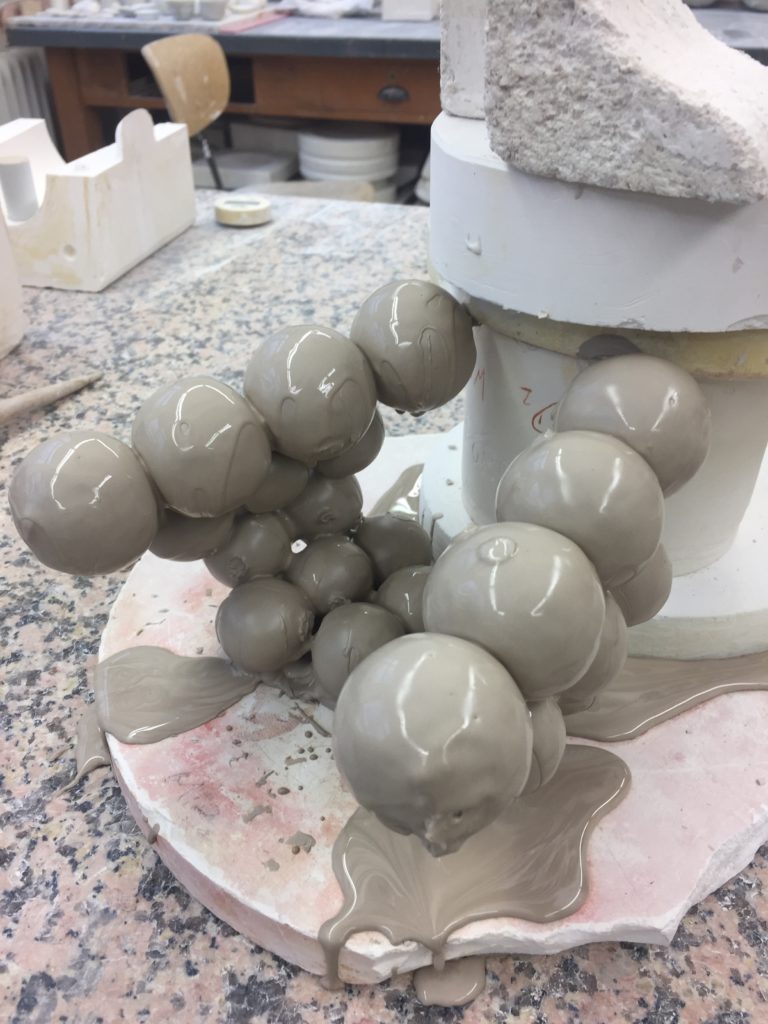

A molding of the brass Water Can was the basis for the porcelain model. Its glazed from the inside. The porcelain cup is also based on a mold of the brass cup.
In the process of burning the porcelain the objects had a contraction of ca. 14%.
When the porcelain was ready the next problem was the pouring. The water didn’t run out clean. So to ensure a clean pouring effect the pot needed a proper spout. I attached a short cylindrical spout to the unburned porcelain body, which mainly solved the problem.






To find a shape I started crafting a can with brass. On top of a bowl shaped base I brazed a conical body with a simple hole as the spout. I used this brass can as a casting mold for a porcelain version.It has a round enchased bottom the finish is a silver covering.
In the end I silvered the brass can to be food safe.





